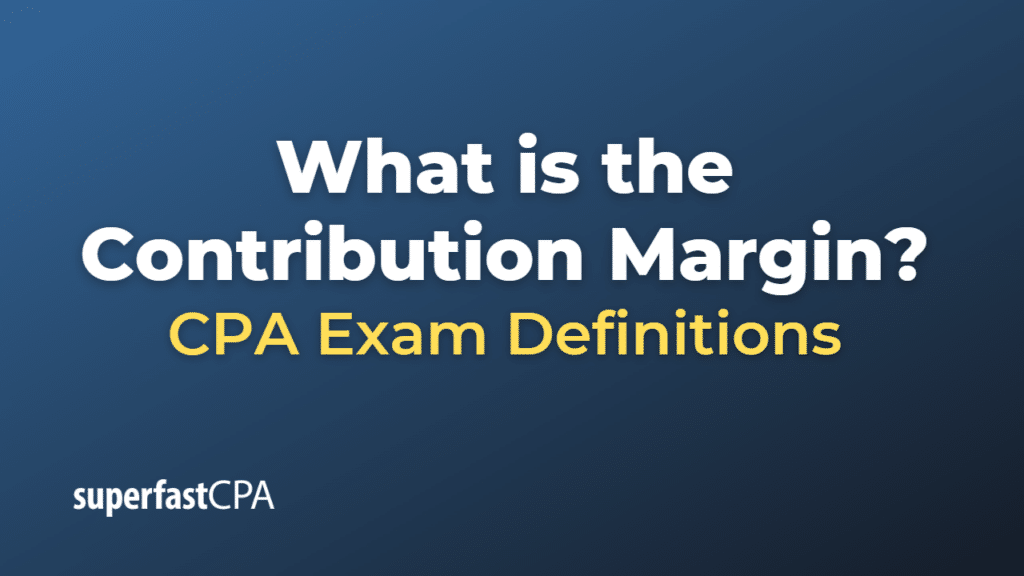Contribution Margin
The contribution margin is a financial metric used in cost accounting and financial analysis to assess a company’s profitability and financial performance. It represents the difference between a company’s total sales revenue and its variable costs. The contribution margin shows the amount of money available to cover fixed costs and generate a profit after accounting for the variable costs associated with producing and selling goods or services.
The contribution margin is useful for various purposes, such as evaluating the profitability of individual products, making pricing decisions, analyzing cost efficiency, determining optimal product mix, and guiding resource allocation.
To calculate the contribution margin, use the following formula:
Contribution Margin = Total Sales Revenue – Total Variable Costs
The contribution margin can also be expressed on a per-unit basis or as a ratio:
Contribution Margin per Unit = Sales Price per Unit – Variable Cost per Unit
Contribution Margin Ratio = Contribution Margin / Total Sales Revenue
A higher contribution margin indicates that a company can generate more profit from its sales and is better positioned to cover its fixed costs. Conversely, a lower contribution margin means that a company has less money available to cover fixed costs and generate a profit after accounting for variable costs.
In summary, the contribution margin is a financial metric that measures the difference between a company’s total sales revenue and its variable costs, representing the amount of money available to cover fixed costs and generate a profit. The contribution margin is a valuable tool for analyzing a company’s profitability and financial performance and can inform various business decisions related to pricing, product mix, cost efficiency, and resource allocation.
Example of the Contribution Margin
Let’s consider a hypothetical example involving a company that manufactures and sells custom-made bicycles.
Here is the cost and sales information for each bicycle:
- Selling price per bicycle: $500
- Variable cost per bicycle: $300 (includes materials, labor, and other per-unit costs)
First, let’s calculate the contribution margin per bicycle:
Contribution Margin per Unit = Sales Price per Unit – Variable Cost per Unit
Contribution Margin per Unit = $500 (price) – $300 (variable cost) = $200
This means that for each bicycle sold, the company generates $200 in contribution margin, which can be used to cover fixed costs and generate a profit.
Now, let’s assume that the company sells 100 bicycles per month. We can calculate the total contribution margin:
Total Contribution Margin = Contribution Margin per Unit × Number of Units Sold
Total Contribution Margin = $200 × 100 = $20,000
Let’s also assume that the company has $12,000 in monthly fixed costs (such as rent, salaries, and utilities). We can now calculate the company’s overall profitability:
Operating Income = Total Contribution Margin – Total Fixed Costs
Operating Income = $20,000 (total contribution margin) – $12,000 (fixed costs) = $8,000
In this example, the company generates a total contribution margin of $20,000 per month, which is enough to cover its fixed costs of $12,000 and generate a profit of $8,000.
Using the contribution margin, the company can analyze the profitability of its bicycles and make informed decisions related to pricing, cost efficiency, and resource allocation. For instance, the company might explore ways to reduce the variable costs associated with producing bicycles or adjust its selling price to improve its contribution margin and overall profitability.













